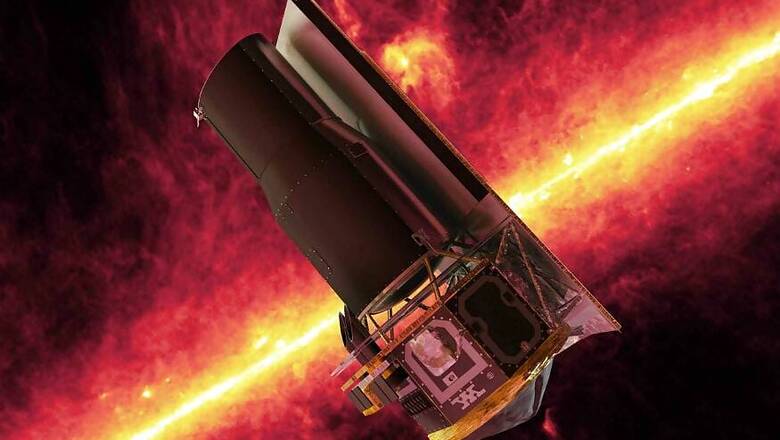
views
After nearly 16 and a half years of service as one of the four Great Observatories of USA's space agency, NASA, the iconic Spitzer Space Telescope has finally called it a day. Mission engineers at NASA's Jet Propulsion Laboratory, headed by Spitzer project scientist Joseph Hunt, announced the decommissioning of Spitzer Space Telescope at 2:30PM PDT on January 30 (4AM IST on Friday, January 31). This closed the chapter on one of the world's most notable and popular space telescopes, which has been credited with numerous pivotal discoveries through the years.
Commemorating the iconic day, Thomas Zurbuchen, associate administrator of NASA's science mission directorate, said, "Spitzer has taught us about entirely new aspects of the cosmos and taken us many steps further in understanding how the universe works, addressing questions about our origins, and whether or not are we alone. This Great Observatory has also identified some important and new questions and tantalizing objects for further study, mapping a path for future investigations to follow. Its immense impact on science certainly will last well beyond the end of its mission."
The most sensitive infrared telescope at its time of launch, Spitzer's work in space research was headlined by its discovery of the TRAPPIST-1 solar system, with seven Earth-sized planets orbiting their star. Spitzer further contributed in gauging the planetary masses and densities, giving mankind its first glimpse at a solar system that looks uncannily like our own, and even features planets in the possible Goldilocks zone, or the habitable zone, of the system. Other key works of Spitzer include its studies of asteroids and comets, and its infrared wavelength capabilities further helped it discover a faint ring around Saturn. It also studied the composition of interstellar dust, paving way for scientists to study in more detail the evolution of galaxies, from the ancient universe to today.
Spitzer also detected asteroid collisions in a distant solar system, giving scientists the knowledge that such incidents are common in the cosmos, and can be crucial in the formative years of planets. While its TRAPPIST discovery was closer to home, it also reached the other end of the spectrum, working in tandem with the Hubble Space Telescope to detect the farthest galaxy ever observed by us till date. Its numerous, extensive achievements are now collated in a free, public data archive, which can be accessed here.
Since yesterday, Spitzer has been put into safe mode, meaning that all of its scientific instruments are now offline. The telescope, which was supposed to retire two years ago, and completed its primary mission over a decade ago, will now be replaced by the updated, more powerful James Webb telescope. The new infrared behemoth of NASA will come online next year, and will carry on the baton of legacy that has now been handed over. Fare thee well, Spitzer.



















Comments
0 comment